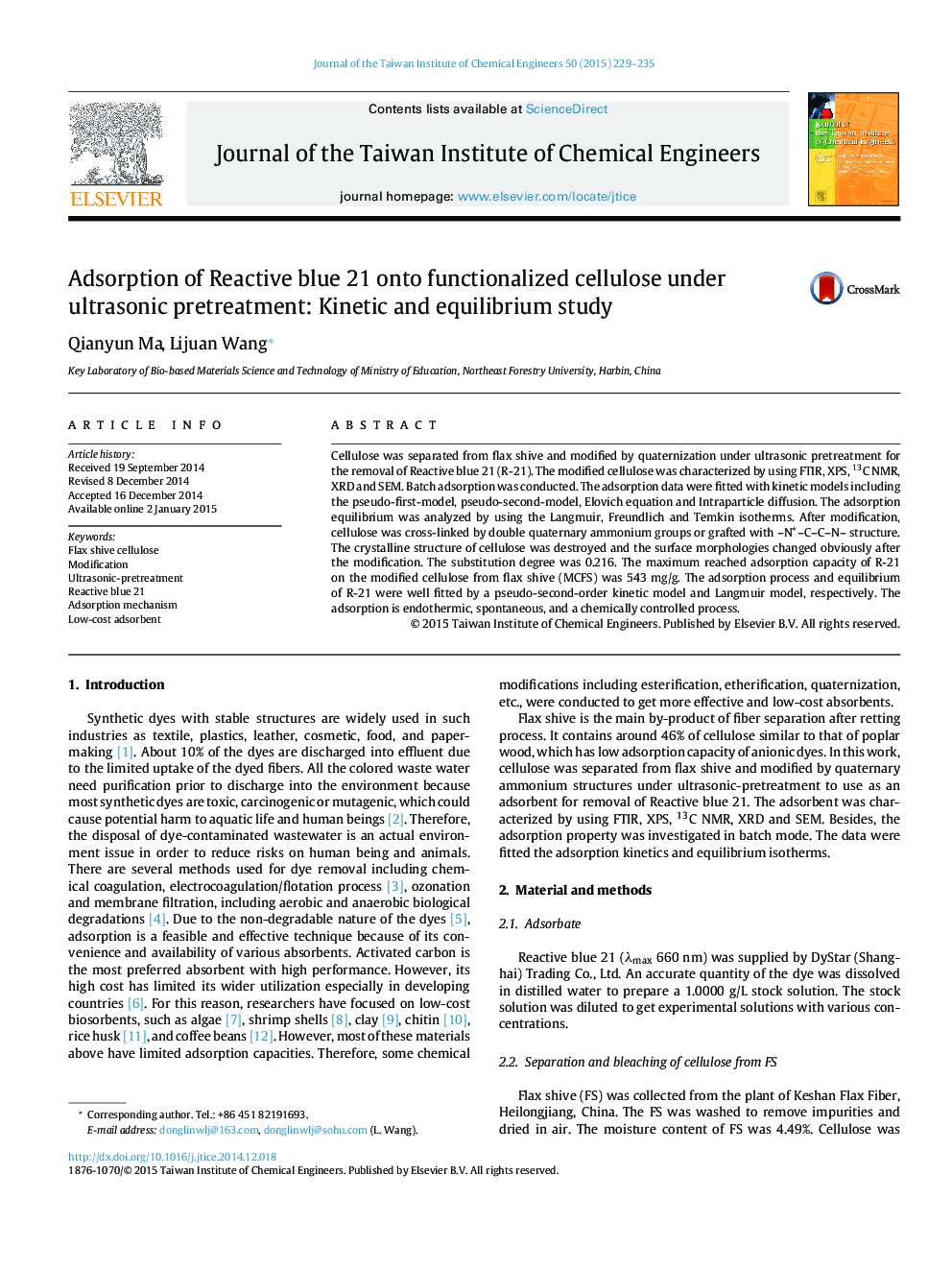| کد مقاله | کد نشریه | سال انتشار | مقاله انگلیسی | نسخه تمام متن |
|---|---|---|---|---|
| 690751 | 1460424 | 2015 | 7 صفحه PDF | دانلود رایگان |
• Modified flax shive cellulose (MCFS) was prepared under ultrasonic pretreatment.
• MCFS was highly effective for removal of R-21 (anionic dye) from aqueous solution.
• The maximum adsorption reached 543 mg/g at 30 °C.
• Pseudo-second-order kinetic model can predict the kinetic process.
• Langmuir isotherm model well described the adsorption of R-21 on MCFS.
Cellulose was separated from flax shive and modified by quaternization under ultrasonic pretreatment for the removal of Reactive blue 21 (R-21). The modified cellulose was characterized by using FTIR, XPS, 13C NMR, XRD and SEM. Batch adsorption was conducted. The adsorption data were fitted with kinetic models including the pseudo-first-model, pseudo-second-model, Elovich equation and Intraparticle diffusion. The adsorption equilibrium was analyzed by using the Langmuir, Freundlich and Temkin isotherms. After modification, cellulose was cross-linked by double quaternary ammonium groups or grafted with –N+–C–C–N– structure. The crystalline structure of cellulose was destroyed and the surface morphologies changed obviously after the modification. The substitution degree was 0.216. The maximum reached adsorption capacity of R-21 on the modified cellulose from flax shive (MCFS) was 543 mg/g. The adsorption process and equilibrium of R-21 were well fitted by a pseudo-second-order kinetic model and Langmuir model, respectively. The adsorption is endothermic, spontaneous, and a chemically controlled process.
Journal: Journal of the Taiwan Institute of Chemical Engineers - Volume 50, May 2015, Pages 229–235
